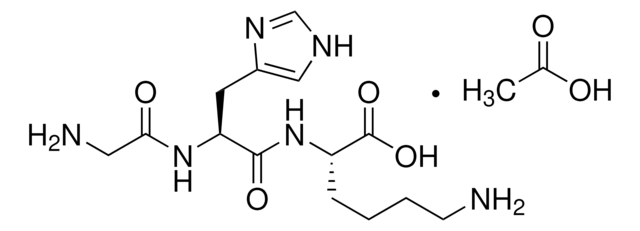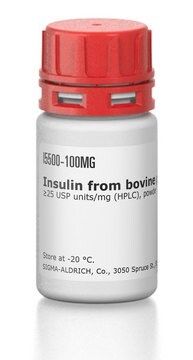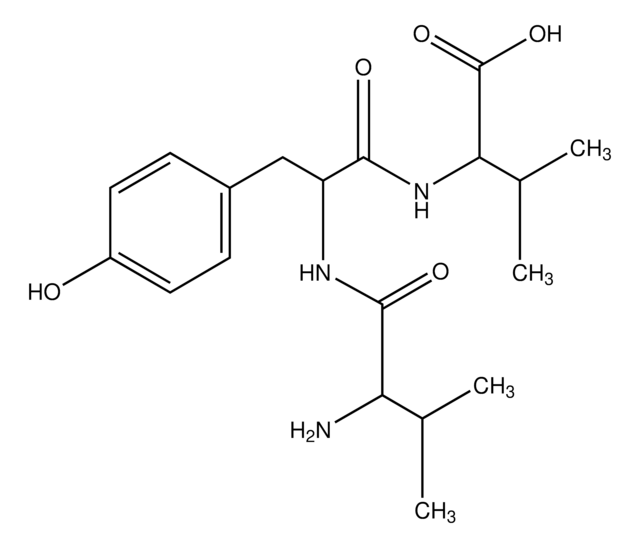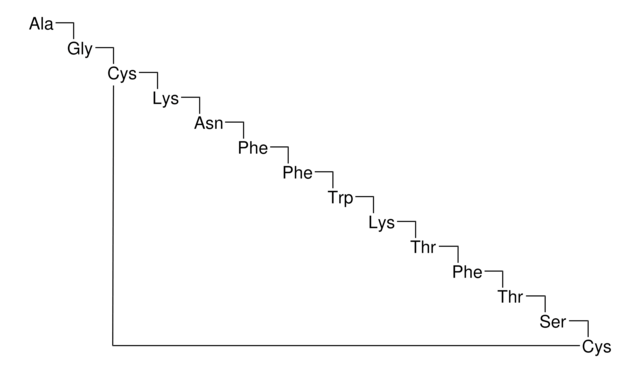G1887
Gly-His-Lys acetate salt
≥97% (TLC)
Sinónimos:
Liver cell growth factor
About This Item
Productos recomendados
assay
≥97% (TLC)
composition
Peptide content, ~70%
storage temp.
−20°C
SMILES string
CC(O)=O.NCCCC[C@H](NC(=O)[C@H](Cc1c[nH]cn1)NC(=O)CN)C(O)=O
InChI
1S/C14H24N6O4.C2H4O2/c15-4-2-1-3-10(14(23)24)20-13(22)11(19-12(21)6-16)5-9-7-17-8-18-9;1-2(3)4/h7-8,10-11H,1-6,15-16H2,(H,17,18)(H,19,21)(H,20,22)(H,23,24);1H3,(H,3,4)/t10-,11-;/m0./s1
InChI key
MGNUTAFMLGJBGV-ACMTZBLWSA-N
¿Está buscando productos similares? Visita Guía de comparación de productos
Amino Acid Sequence
General description
Application
- individually or as a complex with copper to test its effect on cytokines production in the human normal fibroblasts cell lines
- as a model peptide in N,N-dimethyl-N-methacryloxyethyl-N-(3-sulfopropyl)ammonium betaine based capillary electrophoresis separation studies
- as a component of Coon′s modified Ham′s F-12 medium for culturing Fischer rat thyroid follicular cell line, FRTL-5
Biochem/physiol Actions
Packaging
Storage Class
11 - Combustible Solids
wgk_germany
WGK 3
flash_point_f
Not applicable
flash_point_c
Not applicable
Certificados de análisis (COA)
Busque Certificados de análisis (COA) introduciendo el número de lote del producto. Los números de lote se encuentran en la etiqueta del producto después de las palabras «Lot» o «Batch»
¿Ya tiene este producto?
Encuentre la documentación para los productos que ha comprado recientemente en la Biblioteca de documentos.
Nuestro equipo de científicos tiene experiencia en todas las áreas de investigación: Ciencias de la vida, Ciencia de los materiales, Síntesis química, Cromatografía, Analítica y muchas otras.
Póngase en contacto con el Servicio técnico






